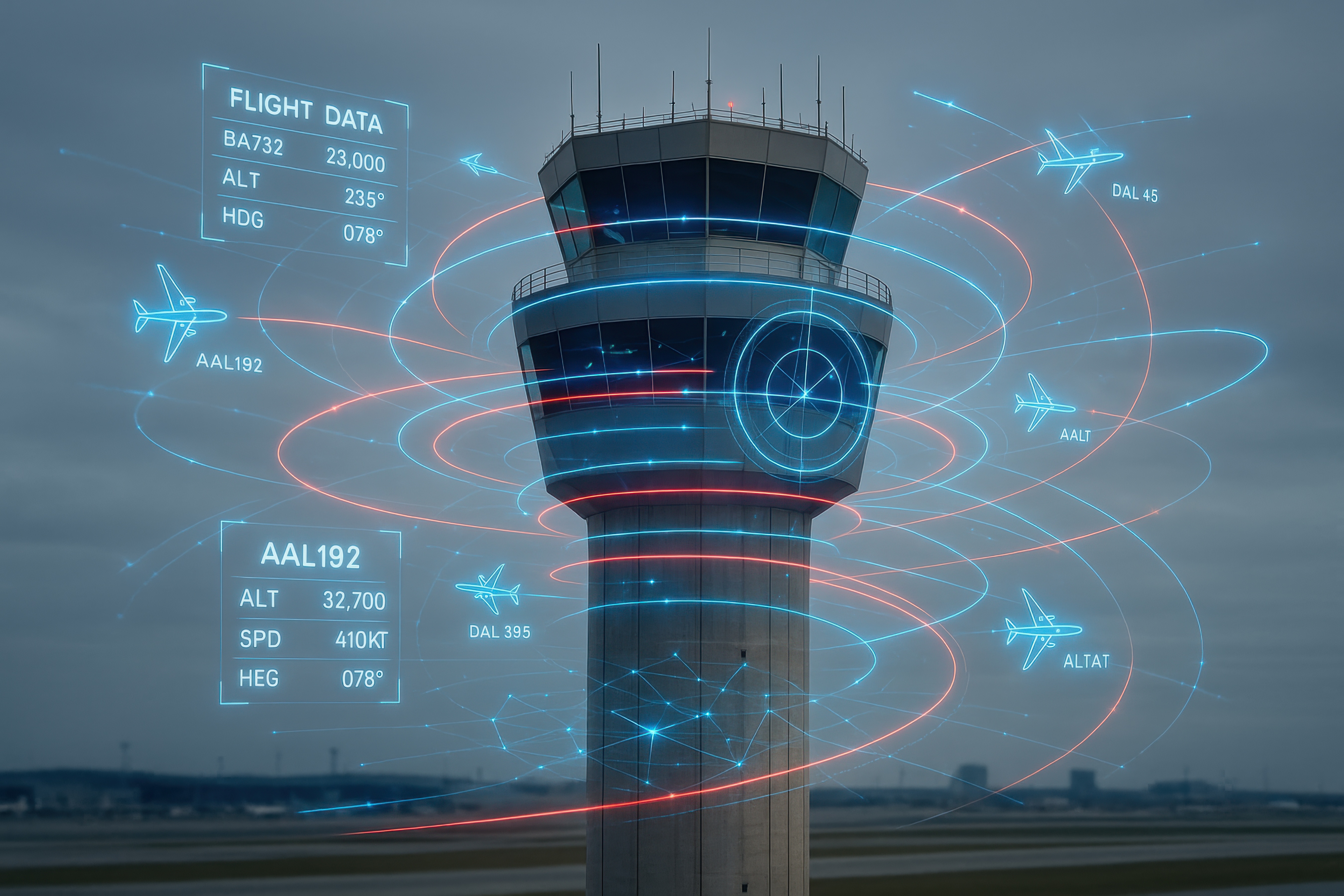Quantum Machine Learning (QML) is redefining safety management by processing massive datasets faster than traditional systems. This speed helps organizations shift from reacting to incidents to preventing them. As safety assessments now track over 250,000 variables worldwide, classical models struggle to keep up. QML enables real-time, data-driven insights that reduce risks and improve compliance.
In sectors like healthcare, transportation, energy, and manufacturing, QML uses quantum principles such as superposition and entanglement to uncover patterns traditional algorithms miss. It helps teams predict risks early, detect anomalies instantly, and manage resources more efficiently.
From industrial hazards to cybersecurity threats, QML identifies warning signs before they escalate. It supports a new generation of predictive safety systems that continuously learn and adapt, ensuring safer and more resilient operations across critical industries.
Advanced Risk Assessment and Prediction
Processing Complex Multi-Variable Datasets
Utilizing the increased processing capacity and greater pattern recognition capabilities of quantum computing, Quantum Support Vector Machines and Quantum Neural Networks can be employed for security risk analysis, able to recognize and classify vulnerabilities and threats by gaining knowledge from previous ones and continuously monitoring data in real-time. Classical machine learning algorithms analyze safety data sequentially, creating computational bottlenecks when processing high-dimensional datasets from multiple sensor sources, historical incident records, environmental monitoring systems, and operational logs.
QML algorithms leverage quantum superposition to evaluate multiple risk scenarios simultaneously. Quantum amplitude estimation provides a near quadratic speed-up compared to Monte Carlo methods, with convergence rates of O(M^-2/3) for polynomial circuit depth growing in the number of qubits, faster than classical Monte Carlo simulations which converge at O(M^-1/2). This acceleration proves particularly valuable for real-time risk assessment where decision windows measure in seconds rather than hours.
Pattern Recognition for Hazard Prediction
Quantum-Inspired Machine Learning can optimize the process of anomaly detection, risk assessment, and vulnerability management, outperforming traditional methods in terms of computational efficiency and accuracy. Industrial environments generate continuous streams of sensor data temperature, pressure, vibration, chemical concentrations, equipment performance metrics. Classical systems analyze these variables independently or in limited combinations, missing subtle correlations that precede catastrophic failures.
QML algorithms identify complex patterns across high-dimensional feature spaces that classical methods cannot efficiently process. QML has the ability to increase prediction and generalization as a result of its status as a probabilistic language capable of modeling complex quantum states, increasing the accuracy with which vulnerabilities are found and categorized, contributing to improvement in reliability. This capability enables safety managers to detect developing hazards weeks before they manifest as incidents, providing adequate lead time for preventive interventions.
Predictive Modeling for Proactive Safety
Traditional safety management operates reactively analyzing incidents after they occur to prevent recurrence. QML enables genuinely predictive approaches by modeling how current conditions evolve toward unsafe states. Quantum computers can determine financial risk for portfolios more efficiently than Monte Carlo simulations, confirming improved convergence rates and demonstrating applicability to complex risk assessment scenarios.
Safety-critical systems in healthcare, transportation, energy, and manufacturing benefit from predictive models forecasting equipment failures, human error probability, process deviations, and environmental hazards. QML processes historical incident data, near-miss reports, operational parameters, maintenance records, and environmental conditions to identify leading indicators and measurable factors that reliably precede safety events. Organizations implement targeted interventions addressing these indicators before incidents occur, fundamentally transforming safety from reactive to preventive.
Complex Optimization for Safety Interventions
Resource Allocation Under Constraints
Safety budgets are finite—organizations must allocate inspection resources, maintenance personnel, safety equipment, training programs, and engineering controls across numerous competing priorities. Quantum annealing algorithms enhance model ability to improve detection accuracy, reduce response times, and offer faster training and convergence when applied to critical security systems.
Classical optimization approaches analyze resource allocation scenarios sequentially or use gradient descent methods that become trapped in local optima accepting "good enough" solutions rather than globally optimal configurations. QML algorithms explore multiple allocation strategies simultaneously, considering complex constraints: regulatory compliance requirements, budget limitations, personnel availability, equipment lead times, operational disruptions, and risk severity across facilities.
The result: optimal safety investment strategies that maximize risk reduction per dollar spent. Organizations identify which interventions deliver the greatest safety improvement, which facilities require immediate attention, and how to sequence improvements to maintain compliance while minimizing operational impact.
Emergency Response Optimization
Quantum algorithms can, in a relatively short period of time, determine the best possible courses of action to adopt in response to recognized hazards, performing calculations concurrently which significantly accelerates the process of vulnerability assessment. Emergency evacuation planning presents combinatorial optimization challenges determining optimal routes through complex facilities, accounting for blocked exits, varying population distributions, mobility limitations, and dynamic hazard propagation.
Classical evacuation models analyze limited scenarios constrained by computational resources. QML evaluates thousands of evacuation configurations simultaneously, identifying routes minimizing total escape time under various incident conditions. This capability proves particularly valuable for large facilities like hospitals, stadiums, airports, and industrial complexes where evacuation complexity exceeds classical optimization capabilities.
Beyond evacuation, QML optimizes emergency response resource positioning where to pre-position fire suppression equipment, medical supplies, emergency power systems, and specialized rescue apparatus to minimize response times across facility layouts.
Enhanced Data Analysis and Anomaly Detection
High-Dimensional Pattern Recognition
QML excels at handling high-dimensional datasets and can accelerate classification tasks, beneficial for identifying subtle anomalies in data that might indicate developing hazards. Modern industrial facilities deploy thousands of sensors monitoring equipment condition, environmental parameters, and operational status. Classical anomaly detection systems establish simple threshold alerts or analyze pairwise correlations, missing complex multi-variable patterns that precede failures.
QML algorithms process entire sensor arrays simultaneously, identifying anomalous patterns across dozens of variables that individually appear normal but collectively signal developing problems. AI-powered anomaly detection leverages machine learning and deep learning techniques to identify unusual patterns in network traffic, system behavior, and user activities, enabling real-time threat detection and reducing false positives.
This capability dramatically reduces false positives alerts triggered by harmless variations while improving detection of genuine hazards. Safety managers receive actionable warnings about developing problems rather than overwhelming alarm floods that obscure critical information.
Cybersecurity Threat Detection
Quantum machine learning frameworks face increased risks of adversarial threats from both classical and quantum domains, with untrusted cloud providers potentially jeopardizing assets and leading to adversarial attacks like model inversion and inference attacks. Industrial control systems, medical devices, and critical infrastructure increasingly face sophisticated cyberattacks threatening safety directly malicious actors manipulating sensors, compromising control systems, or disrupting safety interlocks.
Quantum-Inspired Machine Learning improves the detection rate and response time for various cyber incidents including zero-day attacks, advanced persistent threats, and ransomware by leveraging quantum-inspired optimization approaches. QML analyzes network traffic patterns, system logs, access behaviors, and command sequences to identify attack signatures and anomalous activities indicating compromise. The speed advantage enables real-time threat detection and automated response isolating compromised systems before attackers escalate from reconnaissance to harmful actions.
Real-Time Monitoring and Compliance
Continuous Safety Oversight
As soon as the QML model has been properly educated, it will be able to recognize and classify vulnerabilities and threats to infrastructure, forecasting future attacks by gaining knowledge from previous ones and continuously monitoring data in real-time. Traditional safety audits operate periodically—quarterly inspections, annual compliance reviews creating gaps where hazards develop undetected between assessments.
QML-powered systems enable continuous safety monitoring by processing real-time data streams from wearable devices, environmental sensors, equipment monitors, and operational logs. Organizations receive immediate alerts when conditions deviate from safe parameters: workers entering hazardous zones without proper equipment, equipment operating outside design specifications, environmental conditions approaching dangerous thresholds, or procedural violations occurring.
This continuous oversight fundamentally changes safety management from periodic snapshot assessments to ongoing real-time risk management, enabling immediate intervention rather than discovering problems weeks later during scheduled audits.
Automated Compliance Verification
Regulatory compliance in safety-critical industries involves thousands of requirements, equipment certification, training currency, inspection schedules, maintenance procedures, operational limits, and documentation standards. Manual compliance tracking consumes substantial resources while remaining vulnerable to oversight.
QML systems automate compliance verification by continuously analyzing operational data against regulatory requirements. The systems identify compliance gaps automatically: approaching training expiration dates, overdue equipment inspections, missing documentation, procedural deviations, and regulatory changes requiring action. Organizations maintain compliance proactively rather than discovering violations during regulatory audits, avoiding citations, fines, and operational restrictions.
Safety-Critical System Integration
Healthcare Applications
Safety monitoring has progressed in classical machine learning for safety-critical domains such as healthcare, where dedicated safety mechanisms must adapt as models transition to quantum environments. Medical device monitoring, patient safety surveillance, drug interaction prediction, and infection risk assessment benefit from QML's pattern recognition capabilities.
Hospital systems deploy QML models analyzing electronic health records, medication administration data, lab results, and vital signs to predict adverse events sepsis development, medication errors, patient deterioration, and healthcare-associated infections. Early warnings enable preventive interventions: antibiotic adjustments, enhanced monitoring protocols, care team notifications, and treatment modifications that prevent harm rather than responding after events occur.
Transportation Safety
Autonomous vehicles, aviation systems, and railway operations generate massive real-time data streams requiring instant safety analysis. QML processes sensor fusion data cameras, radar, LIDAR, GPS, inertial measurements to detect hazardous conditions: pedestrian conflicts, obstacle detection failures, navigation errors, and equipment malfunctions.
The processing speed advantage enables safety interventions within the milliseconds available before collisions. Systems identify dangerous scenarios developing and trigger automated responses, emergency braking, trajectory adjustments, warning alerts faster than classical processing allows.
Energy and Industrial Applications
Implementation of quantum computing solutions has demonstrated the potential to bridge performance gaps, with early adopters reporting processing speed improvements of up to 400% in controlled environments for risk assessment systems. Power plants, chemical facilities, oil refineries, and manufacturing operations manage complex processes where failures cascade catastrophically.
QML monitors process parameters, equipment condition, and environmental factors to predict failures before they trigger safety events. Systems identify: equipment degradation patterns, process instability indicators, abnormal operating modes, and environmental conditions threatening safe operations. Organizations schedule controlled shutdowns for maintenance rather than experiencing uncontrolled failures causing injuries, environmental releases, or facility damage.
Development of Quantum-Specific Safety Tools
Q-SafeML Framework
This work introduces Q-SafeML, a safety monitoring approach for QML that builds on SafeML by utilizing statistical distance measures to assess model accuracy and provide confidence in algorithm reasoning, incorporating quantum-centric distance measures aligned with the probabilistic nature of QML outputs. As QML deployment in safety-critical applications increases, ensuring the models themselves operate safely becomes essential.
Q-SafeML represents a significant methodological departure from classical SafeML—rather than evaluating input drift, it assesses the reliability of quantum classifier outputs by comparing sets of correctly and incorrectly classified predictions using quantum distance metrics. This framework monitors QML models for concept drift—when the statistical properties of prediction targets change over time—and unexpected behavior indicating model degradation or adversarial manipulation.
Addressing QML Vulnerabilities
Machine learning models are exposed to malicious external attacks that drastically falsify results and assessments to the harm of people in safety-critical situations, with quantum computing reshaping the safety and security landscape of algorithms. Potential vulnerabilities include transpilation process backdoors during conversion of quantum algorithms into hardware-specific implementations, and readout attacks examining adversarial tampering with quantum measurement processes.
Organizations deploying QML in safety applications must implement defensive measures: quantum error detection methods like parity checking, secure quantum algorithm transpilation, measurement process verification, and continuous model performance monitoring. It is imperative to conduct thorough studies to assess security vulnerabilities and develop innovative techniques to ensure efficient and secure operation of future QML providers.
Advancing Predictive Safety with BQP
As industries shift from reactive safety measures to predictive, data-driven systems, BQP’s quantum-inspired simulation platform enables organizations to anticipate, detect, and neutralize risks before they escalate.By combining Quantum Machine Learning (QML) with simulation-driven optimization, BQP empowers enterprises to monitor complex systems in real time and ensure safety across every operational layer.
BQP enables safety and risk management teams to:
- Predict hazards and system failures weeks in advance with QML-powered modeling.
- Enhance real-time anomaly detection and compliance monitoring across facilities.
- Optimize safety resource allocation for faster, more effective emergency response.
- Strengthen cybersecurity resilience with quantum-safe detection frameworks.
Through hybrid quantum-classical architectures, BQP bridges theoretical models and real-world safety applications delivering actionable intelligence and measurable reductions in risk exposure. From manufacturing floors to aerospace systems, BQP provides the quantum advantage organizations need to protect people, assets, and infrastructure.
Book a Demo- Start your 30 day trail :
Explore BQP’s Quantum Safety Platform – See how BQP helps organizations build safer, more resilient operations powered by predictive quantum intelligence.
Conclusion
Quantum Machine Learning is redefining safety management from reactive responses to proactive prevention. By processing complex datasets exponentially faster, QML helps organizations predict hazards, detect anomalies in real time, and maintain continuous compliance across critical sectors like healthcare, energy, and transportation.
Early results show higher detection accuracy, faster response times, and stronger system reliability, proving QML’s value in high-stakes environments. As quantum hardware and safety frameworks like Q-SafeML evolve, adoption will accelerate empowering organizations to prevent incidents before they occur and build resilient, self-adaptive safety systems for the future.
FAQ’s
1. How does Quantum Machine Learning improve safety management compared to traditional methods?
Quantum Machine Learning (QML) analyzes massive, multi-variable datasets exponentially faster than classical algorithms. This allows safety teams to predict hazards before they occur, detect anomalies in real time, and make faster, data-driven decisions moving from reactive to proactive safety strategies.
2. Which industries benefit most from QML-based safety systems?
QML delivers measurable value in healthcare, transportation, energy, defense, and manufacturing, where real-time monitoring, predictive maintenance, and regulatory compliance are critical. It enhances reliability, minimizes downtime, and prevents incidents across safety-critical operations.
3. What role does Q-SafeML play in ensuring safety within QML systems?
Q-SafeML is a quantum-specific safety framework that measures the reliability and accuracy of QML models. It detects model drift, output anomalies, and adversarial manipulation, ensuring that QML-driven safety systems remain stable, transparent, and secure throughout their lifecycle.
4. Do organizations need quantum hardware to implement QML for safety?
Not necessarily. Many practical solutions run on hybrid quantum-classical systems or cloud-based quantum simulators, making QML accessible without dedicated quantum hardware. Platforms like BQP already provide these capabilities through simulation-driven quantum optimization.
5. How can companies get started with quantum safety technologies like BQP?
Organizations can begin by identifying high-impact safety challenges such as anomaly detection, emergency response, or compliance monitoring—then pilot BQP’s Quantum Safety Platform to integrate predictive QML models into their workflows. Early adoption helps teams gain measurable ROI and build safer, more resilient operations.





.png)
.png)




.svg)
.svg)
.svg)
.svg)